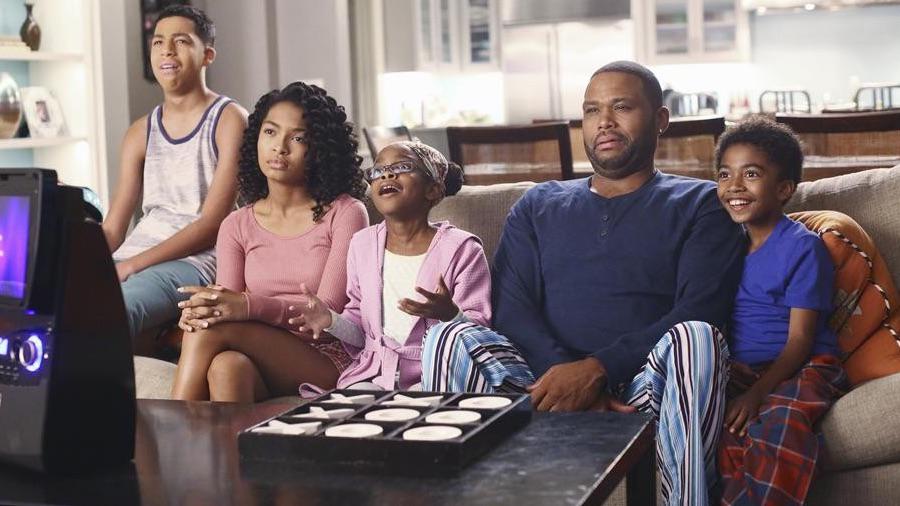No more guessing: Screen time guidelines for toddlers to teenagers

Plus why family movie nights don’t really count.
Table of Contents
Screen time: It’s probably one of the most debated and occasionally frustrating aspects of parenting in the modern age. Pediatricians and researchers say too much time with phones, tablets or TVs is bad for developing minds. But, for many families, a screen-free childhood isn’t possible or even desirable. After all, we live in a digital age and our kids need to be tech and media savvy.
Matthew Johnson, the Director of Education for MediaSmarts, a not-for-profit charitable organization for digital and media literacy, screen-time balance is about more than counting minutes—and looks different at every stage of childhood.
Here’s what we know about age-appropriate limits for screen time:
For toddlers
According to the American Academy of Pediatrics, toddlers should pretty much only see screens during occasional video chats with Grandma. In fact, The Atlantic reports that video chat evokes a different neurological response in babies and toddlers than pure TV time, noting that children seem to understand the video chat is a two-way human interaction that is different than television or even phone conversation:
“Babies who are pretty young are able to pick up, in particular, whether or not an adult is actually responding to them in real time. . . [and] researchers have found that toddlers are more comforted by their mothers via video chat than they are through audio alone. Video chat appears to be, conceptually, much easier for babies to grasp than a phone conversation,” The Atlantic notes.
But even video chat should be limited.
“There really is fairly strong evidence that time spent with screens can have a negative effect on kids’ language and other forms of development,” Johnson tells Motherly. “[It’s] not necessarily because there’s anything particularly bad about screens, but because it replaces the kinds of human interactions and physical and creative play that kids at that age really need to develop.”
For preschoolers
Three to 5 year olds are known for loving video screens as much as they love cartoon characters—and, according to Johnson, their obsession with both can be satisfied in moderation.
“There’s nothing particularly bad about handheld devices compared to other types of screens, except of course the temptation to use them as a calming or distracting device,” he says. He adds parents should plan screen time in advance so that it is only used mindfully, rather than out of desperation.
And if your kiddo is obsessed with Frozen or Paw Patrol, Johnson suggests engaging with those characters off screen.
“Many, many types of screen media content have print or other versions, so you can read a book or a comic that features those characters frequently,” he says. “You can also engage your kids in creative play. You can get them to draw or tell stories or act out their own versions of these character’s adventures.”
For elementary school-aged kids
When kids enter school and start to have new priorities, screen time needs to take a back seat. But, as they grow, parents can gradually give kids more control and choice in managing their time.
“Certainly once they start getting homework at school, you want to make sure screens aren’t a habit before work gets done,” says Johnson, who compares teaching screen time balance to teaching oral hygiene. “When kids are young, you brush their teeth but as they grow you teach them and remind them to do it.”
He suggests that as kids age, parents make distinctions between different types of screen time—as not everything has the same value.
“Specifically, instead of counting hours you might consider a creative use of screens—doing an animation project or doing school research—as being counted differently than using it in a passive way.”
For middle schoolers
According to Johnson, once a child is in middle school they can understand the concept of balance. Then it’s up to parents to help them see how that relates to screen time.
“Make a list of all the different activities that they like, that are both in screens and that aren’t involved with screens,” he says, explaining this can help them understand that there are trade-offs.
He says parents don’t need to worry if a kid gets really into a certain video game for a week or two. Just gently try to help the kid see the benefits of moderation. He explains, “They do need to develop the life skill—as we all need to do today—to recognize when we’re spending too much time doing any one thing, particularly with screens.”
For the whole family
Johnson says the biggest downside of screen time is its tendency to isolate us. To counteract that, he suggests a family movie night or outing to the cinema. Because this has a totally different effect on children than solitary YouTube sessions, parents shouldn’t worry about counting communal activities against a screen time limit.
He says parents should also have conversations about appropriate amounts of media consumption often—and model the behavior we want.
“We need to gradually shift that responsibility from us to them,” he says. “Eventually they’re going to be teenagers or they’re going to be out of the house and it’s going to be entirely up to them to manage it.”





































